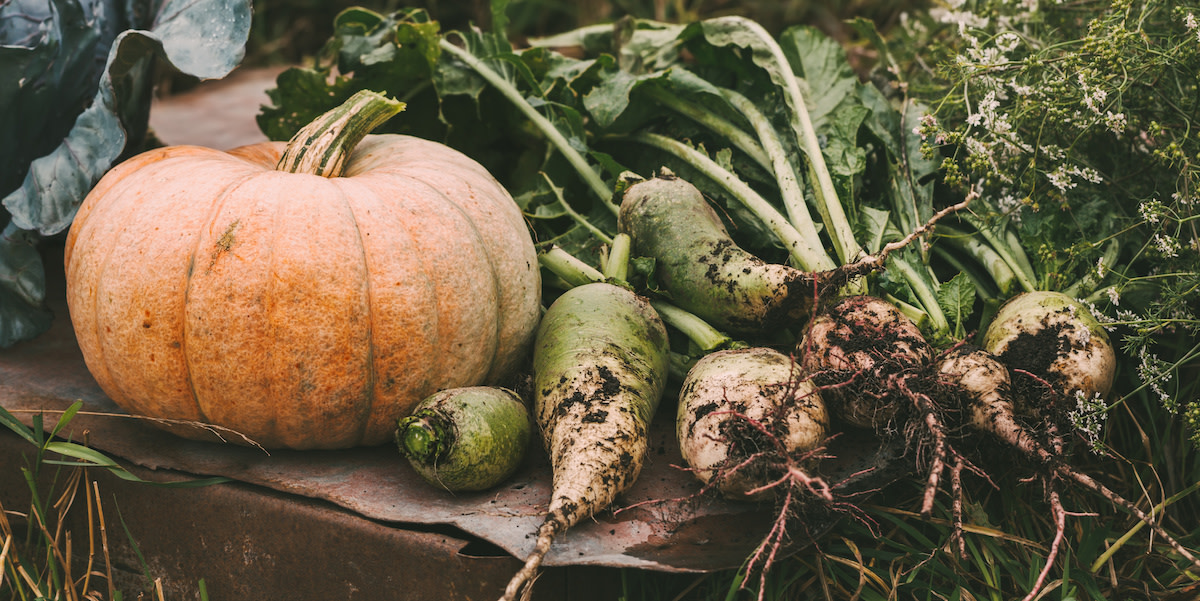Pumpkin Companion Planting: What to Plant With Pumpkins
Written by MasterClass
Last updated: Jun 7, 2021 • 2 min read
A successful garden is one that emulates nature, with the soil, plant life, and beneficial insects all working together as a harmonious whole. This means that while some crops may succumb to pests and disease from time to time, natural checks and balances keep the overall system healthy—without having to resort to chemicals.
Learn From the Best
What Is Companion Planting?
Engage in companion planting to keep out pests that would otherwise feast on your vegetable garden. This form of integrated pest management is a time-tested, practical way to maintain a healthy garden—attracting pollinators while filling it with sumptuous blossoms and seductive scents.
Growing mint can help an ant problem. Lemongrass has citronella, which mosquitoes hate. Lavender will attract bees, but repel other bugs. Marigolds will help get rid of mosquitoes, white flies, and root-knot nematodes. Chives will deter cucumber beetles; borage paves the way for ideal zucchini squash pollination. Bush beans and pole beans manage the nitrogen content of soil.
What Plants to Grow With Pumpkins
Companion planting is all about encouraging growth, and optimizing overall output, combining guardian plants with complementary crops. Growing healthy pumpkin plants means being prepared for any number of pests: squash bugs, cucumber beetles, squash vine borers, and aphids can all be a problem for developing fruit. Companion planting pumpkins with heat-tolerant, pollinator-attracting neighbors can help them manage.
- Aromatic herbs like oregano, chives, chamomile, marjoram, tansy, and hyssop. Oregano makes a good ground cover and attracts hoverflies, which feed on aphids, while the presence of marjoram is said to enhance pumpkin’s flavor. Tansy is a mostly ornamental plant that both boosts potassium in soil and repels Japanese beetles.
- Radishes. Flea beetles are more likely to go for radishes when given the choice, so they can be used as a sacrificial trap crop if needed. (Basil and catnip are effective repellents of flea beetles, among many other pests.)
- Nasturtium. This peppery, orange-flowered vine is considered one of top attractors of natural predators to not-so-beneficial garden pests, including squash bugs, aphids, and pumpkin beetles.
- Corn and beans. Take advantage of a centuries-old tradition and plant pumpkins near its natural fellows, as seen in the classic Native American “Three Sisters” planting technique. The corn stalks act as a natural trellis for the beans, which feed nitrogen back into the soil. Low-lying pumpkin leaves and vines act as living mulch and weed control.
What Not to Plant With Pumpkins
Consulting a companion planting chart will also show you what not to plant together. For example, pumpkins don’t typically make good companions for potatoes, or anything in the brassicas (cabbage) family like cauliflower, kohlrabi, Brussels sprouts, or kale.
Learn More
Grow your own food with Ron Finley, the self-described "Gangster Gardener." Get the MasterClass Annual Membership and learn how to cultivate fresh herbs and vegetables, keep your house plants alive, and use compost to make your community - and the world - a better place.
